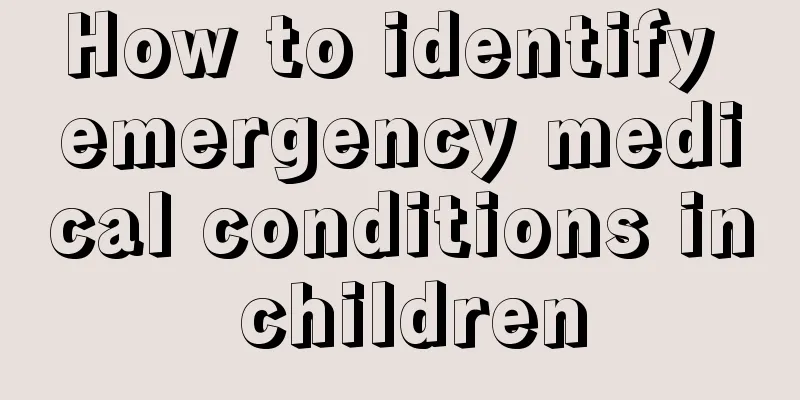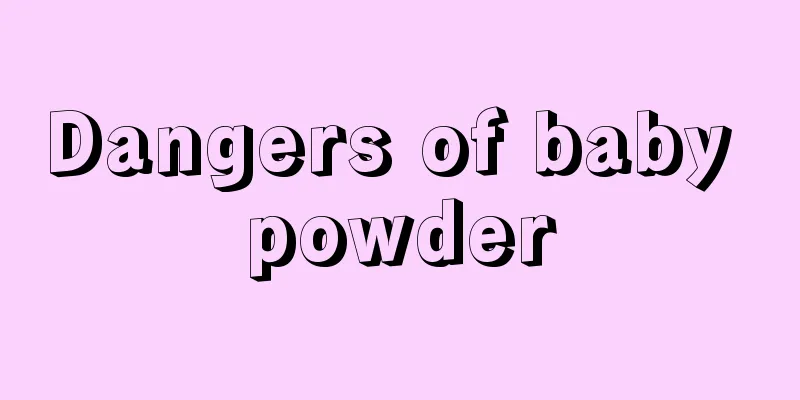How to identify emergency medical conditions in children

|
Roseola infantum is a common skin disease in children. Patients with roseola infantum usually have symptoms such as fever, runny nose, cough, etc. These symptoms are similar to those of a cold. Some people mistakenly treat roseola infantum as a cold, taking antipyretics, intravenous drips, anti-inflammatory drugs, etc., but they do not know that this is an incorrect method and may make the symptoms worse. If you want to treat a disease like roseola infantum, you need to understand this disease. So here we will introduce how to identify roseola infantum. 1. Determine the method/steps : 1/6 The first step for a baby to have a fever is to check the temperature, measure it every half an hour, and make sure it is not too high (>39°) 2/6 Put a cooling patch or a cool towel on your baby. If the fever persists, it is best to cut the cooling patch into small pieces and stick them on the aorta (neck, armpits, thighs). It doesn't matter if you don't know where the aorta is. Just feel it with your hand and stick it where it is hot. 3/6 If the temperature exceeds 39°C at one time, or lasts for more than 1 hour, you can give your baby some antipyretic medicine. Children's antipyretic medicine is generally Motrin or Tylenol. These two medicines should be taken alternately, that is, take Motrin the first time and take Tylenol the next time. This can reduce the residual substances of each medicine in the body. 4/6 Touch behind the baby's ears more often. If there are lymph nodes, they will usually bulge slowly, not just a big lump at the beginning. 5/6 Go to the hospital for a blood test. If you can see a decrease in the neutrophil ratio and an increase in the lymphocyte ratio, then it is almost certain that the child is in an emergency. 6/6 Generally, some small rashes will be found on the baby's body one day after the fever. They are very small and need to be carefully examined. They are obviously different from mosquito bites and are a bit like small blisters. Three days after the fever, patches of red spots will appear. At this time, the fever has basically subsided. If it has not subsided, it means that the rash has not yet grown completely. Some babies will develop the rash on the upper body first and then the lower body. Our older baby has a lot of rashes, while the younger baby has fewer rashes. Precautions Try not to hang water or take antipyretics The baby's skin has poor heat dissipation function, so you must not cover the baby's sweat to prevent the baby from having cramps due to high fever. 2. Typical symptoms of infantile rash Roseola infantum often has an acute onset, with sudden high fever and repeated onset. Even taking antipyretics can only reduce the fever temporarily, and the fever will subside after 3 to 4 days. When the body heat starts to subside or the fever subsides later, a red rash will appear on the face, trunk, waist, buttocks, etc. During the fever period, it is indeed impossible to confirm whether it is roseola infantum, and only symptomatic treatment is given. However, the difference between roseola infantum and fever caused by respiratory tract infection is that there are no other symptoms such as nasal congestion, runny nose, cough, sputum, vomiting, etc., only fever, and the children are usually in good mental state and their eating is not affected, so a preliminary diagnosis can be made. 3. What to do about roseola infantum The characteristic of roseola infantum is that the rash appears after the fever subsides. Generally, the rash disappears on its own 1 to 2 days after it appears. There is no desquamation or pigmentation after the rash disappears. The rash will heal once it is completely out. No special care is needed. Continue to eat a light diet and drink plenty of water. Since it is impossible to confirm whether it is roseola infantum when the fever occurs, only symptomatic treatment can be given. If the body temperature exceeds 38.5℃, antipyretic drugs should be used in time. However, antipyretic drugs should not be taken more than 4 times a day. Physical cooling methods such as warm water sponge baths and baths can be used to assist in reducing fever. Drink plenty of water, eat a light diet, dilute milk powder before drinking, and avoid high-protein foods such as eggs and meat. Closely monitor the progression of the disease. If the child appears to be in a bad mental state, listless or irritable, has a poor appetite, or has other symptoms, seek medical attention promptly to avoid delaying the disease. |
<<: How to treat rashes in infants
>>: Symptoms of autumn diarrhea in children
Recommend
Massage techniques for diarrhea in children
Children will have many uncomfortable symptoms af...
How to easily arrange for a 5-year-old child to sleep in a separate bed from his parents
Watching my son who sleeps next to me grow up day...
White spots on the child's throat
Many children are found to have white spots in th...
What are the growth and development standards for a five and a half month old baby?
A five-and-a-half-month-old baby can already turn...
What should I do if a little girl has right chest pain?
Some parents may be able to tell their children a...
Can children wear silver bracelets?
Many parents will give their children silver brac...
Is it good for babies to take a bath every day?
There are many benefits to bathing your baby. It ...
Why is my baby shivering all the time?
Many mothers will find that for some unknown reas...
Height and weight of three-year-old baby
After many families have children, the topic of c...
What to do if your child has low immunity
Children's immunity is very low compared to a...
Are injections useful for children to grow taller?
Children need to face many problems during their ...
What are the symptoms of formaldehyde poisoning in children?
After buying a new house, modern people will choo...
The child has goose bumps
Many parents will find that their children have g...
What causes sinusitis in children?
Nowadays, sinusitis is a disease that many of our...
What to do if a newborn has congenital heart disease
Heart disease is the number one killer that threa...









